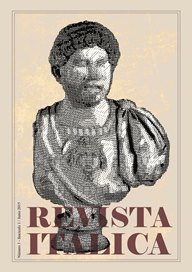APUNTES SOBRE EL LEGADO JUDEOCRISTIANO ETÍOPE EN LA CONFORMACIÓN PREHEGIRIANA DE UNA ESCATOLOGÍA PROTOCORÁNICA
Keywords:
Etiopía, Período pre-hegiriano, Judeocristianismo, Escatología, Meca, Sur de Arabia, Henoc, Corán, Pre-Hegirian period, Judeo-Christian, Eschatology, Mecca, South Arabia, KoranAbstract
Aproximación al legado abisinio o etíope en el diseño, previo a la Hégira (622 d.C.), de lo que entendemos como escatología islámica. El objetivo es proporcionar una serie de apuntes con la finalidad de comprender que la escatología judeocristiana, representada por la colonia etíope residente en Meca durante los siglos VI y VII d.C., representa muy probablemente la fuen- te de la que emana el trasfondo apocalíptico presente en el Corán. Palabras clave: Etiopía. Período pre-hegiriano. Judeocristianismo. Escatología. Meca. Sur de Arabia. Henoc. Corán.
-------------------------------------------------------------------------
In this article I attempt to make an approach to the Ethiopian or Abisinian legacy in the Pre-Hegirian design (622 AD) of what we assume as islamic eschatology. My purpose is to provide a series of notes, in order to under- stand that the Judeo-Christian eschatology, represented by the Ethiopian community of Mecca during the sixth and seventh century AD, is the most probably source of the apocalyptical background in the Koran.
Downloads
Downloads
Published
How to Cite
Issue
Section
License
1. Authors retain copyright and grant the journal the right to be the first to publish the work and to do so under a "Creative Commons Attribution-NonCommercial 3.0 Spain" (CC-by-nc-sa) licence, unless otherwise indicated.
2. This licence allows others to share, copy, distribute and publicly communicate the work, as well as to make derivative works as long as the work is attributed to the author(s), is not used for commercial purposes and is shared under the same licence.
You can consult the informative version and the legal text of the licence here. This must be expressly stated in this way when necessary.
3. Authors may separately enter into additional agreements for the non-exclusive distribution of the version of the work published in the journal (e.g. placing it in an institutional repository or publishing it in a book), with an acknowledgement of its initial publication in this journal.
4. Authors are allowed and encouraged to disseminate their work electronically (e.g., in institutional repositories or on their own website) before and during the submission process, as it may lead to productive exchanges, as well as earlier and higher citation of published work (see The Effect of Open Access).


 Universidad Pablo de Olavide
Universidad Pablo de Olavide